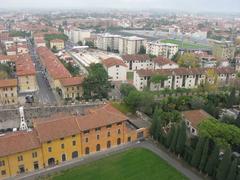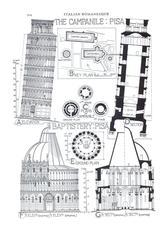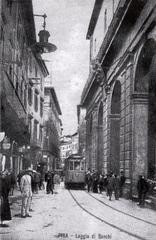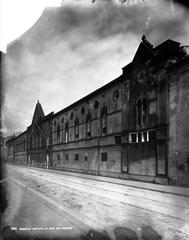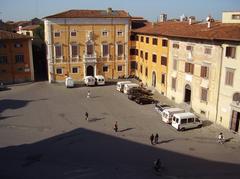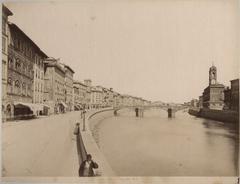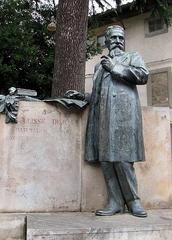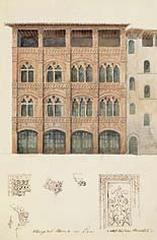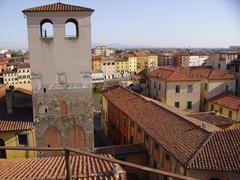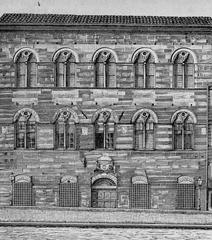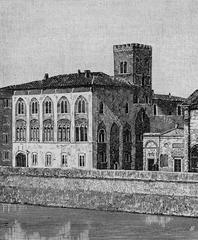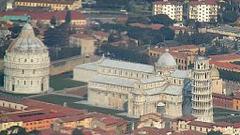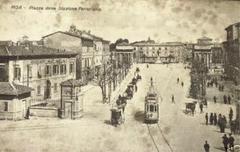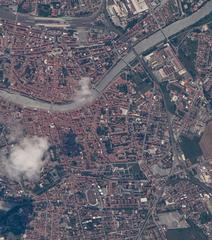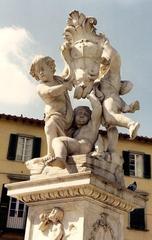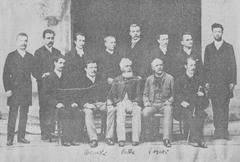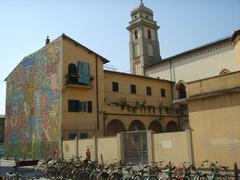Comprehensive Guide to Visiting Torre Pendente di Pisa, Pisa, Italy
Date: 16/07/2024
Introduction
The Leaning Tower of Pisa, or ‘Torre Pendente di Pisa,’ is not just an architectural marvel but also a testament to human ingenuity and resilience. Renowned globally for its unintended tilt, the tower has captivated the imagination of millions, drawing visitors from all corners of the globe. Constructed in the 12th century as a freestanding bell tower for the adjacent Pisa Cathedral, the tower’s lean, caused by unstable soil, has since become its defining feature (History Tools). This comprehensive guide aims to provide an in-depth exploration of the Leaning Tower of Pisa, covering its rich historical background, cultural significance, architectural features, and essential visitor information. Whether you’re an avid history enthusiast or a curious traveler, this guide is designed to help you make the most of your visit to this iconic landmark.
Table of Contents
- [Introduction](#introductionintroduction)
- [Historical Background](#historical-backgroundhistorical-background)
- [Construction and Early Challenges](#construction-and-early-challengesconstruction-and-early-challenges)
- [Interruptions and Resumptions](#interruptions-and-resumptionsinterruptions-and-resumptions)
- [Continued Lean and Stabilization Efforts](#continued-lean-and-stabilization-effortscontinued-lean-and-stabilization-efforts)
- [Cultural Significance and Legends](#cultural-significance-and-legendscultural-significance-and-legends)
- [Modern-Day Preservation and Tourism](#modern-day-preservation-and-tourismmodern-day-preservation-and-tourism)
- [Key Historical Milestones](#key-historical-milestoneskey-historical-milestones)
- [Architectural Features](#architectural-featuresarchitectural-features)
- [Visitor Information](#visitor-informationvisitor-information)
- [Leaning Tower of Pisa Visiting Hours](#leaning-tower-of-pisa-visiting-hoursleaning-tower-of-pisa-visiting-hours)
- [Leaning Tower of Pisa Tickets](#leaning-tower-of-pisa-ticketsleaning-tower-of-pisa-tickets)
- [Travel Tips](#travel-tipstravel-tips)
- [FAQ Section](#faq-sectionfaq-section)
- [Conclusion](#conclusionconclusion)
Historical Background
Construction and Early Challenges
The construction of the Leaning Tower of Pisa began in August 1173. The project was overseen by the Italian architect Bonanno Pisano, who envisioned a freestanding bell tower for the cathedral complex in Pisa. The tower was designed to be a circular structure with six colonnaded floors topped by a bell chamber, reaching a height of 60 meters (196 feet) (History Tools).
However, trouble began almost immediately after construction started. By the time the third floor was completed in 1178, the tower had already begun to sink on one side due to the soft, unstable soil beneath its foundation. Pisa’s soil, composed of sand, clay, and deposits from the nearby Arno and Serchio rivers, proved unable to support the tower’s weight evenly (History.com).
Interruptions and Resumptions
Shortly after the initial tilt was noticed, construction was halted due to the outbreak of war between Pisa and Genoa, another Italian city-state. This delay, which lasted nearly a century, allowed the foundation to settle further, likely preventing the bell tower’s premature collapse (History.com).
Construction resumed in 1272 under the direction of Giovanni di Simone, who attempted to compensate for the tilt by building the upper floors with one side taller than the other. This approach, however, only caused the tower to lean further. The seventh floor was added in the 14th century, and a bell chamber was finally installed in 1372, completing the structure (Doric Column).
Continued Lean and Stabilization Efforts
Despite numerous attempts to correct the tilt, the Leaning Tower of Pisa continued to lean. In 1838, architect Alessandro Della Gherardesca dug a pathway at the tower’s base to allow visitors to admire its intricate design. Unfortunately, this excavation caused the tower to lean even more (Doric Column).
The tower’s lean became a significant concern in the 20th century. In 1987, the Leaning Tower of Pisa was declared a UNESCO World Heritage Site, along with the cathedral, baptistery, and cemetery in the Piazza del Duomo (History Tools). In 1990, the tower was closed to the public, and extensive stabilization efforts began. Engineers installed a leaden counterweight of over 800 tons and used soil extraction techniques to reduce the tilt. By 2001, the tower’s tilt had been reduced by nearly half a degree, returning it to its position from the early 19th century (Doric Column).
Cultural Significance and Legends
The Leaning Tower of Pisa has become a cultural icon, inspiring countless works of art, literature, and popular culture. Its image has been featured in films, television shows, and video games, cementing its status as an instantly recognizable symbol of Italy and architectural resilience (History Tools).
One of the most famous legends associated with the tower involves the renowned scientist Galileo Galilei. According to the story, Galileo dropped objects of varying weights from the tower to demonstrate the principles of free fall and gravity. While the veracity of this tale is debated, it has nonetheless contributed to the tower’s scientific and historical significance (History Tools).
Modern-Day Preservation and Tourism
Today, the Leaning Tower of Pisa stands as a testament to human ingenuity and perseverance in the face of adversity. Its unique lean, the result of unstable soil and centuries of well-intentioned but ultimately flawed attempts at correction, has transformed it from an architectural embarrassment into a beloved global icon (History Tools).
The tower continues to attract millions of tourists each year, who come to marvel at its architectural marvel and take iconic photos. Visitors can climb the tower’s 294 steps to enjoy panoramic views of Pisa and the surrounding Tuscan landscape. The tower’s continued stability is ensured through ongoing monitoring and maintenance efforts, allowing future generations to appreciate this remarkable structure (Doric Column).
Key Historical Milestones
- 1173: Construction of the Leaning Tower of Pisa begins.
- 1178: The tower begins to lean after the completion of the third floor.
- 1272: Construction resumes under Giovanni di Simone, who attempts to correct the tilt.
- 1372: The bell chamber is installed, completing the tower.
- 1838: Alessandro Della Gherardesca’s excavation causes the tower to lean further.
- 1987: The Leaning Tower of Pisa is declared a UNESCO World Heritage Site.
- 1990: The tower is closed to the public for stabilization efforts.
- 2001: The tower reopens after successful stabilization, reducing the tilt by nearly half a degree.
Architectural Features
The Leaning Tower of Pisa is renowned for its Romanesque architecture, characterized by its white and grey marble exterior, blind arches, and six colonnaded floors. The tower’s cylindrical shape and open galleries provide a striking visual contrast to the adjacent Pisa Cathedral and Baptistery, both of which share similar architectural styles (Doric Column).
The tower’s interior is mostly hollow, with a spiral staircase leading to the top. The bell chamber houses seven bells, each tuned to a musical scale. The largest bell, known as ‘Pasquereccia,’ was installed in 1655 and weighs over 3.5 tons (History Tools).
Visitor Information
Leaning Tower of Pisa Visiting Hours
The Leaning Tower of Pisa is open to the public daily. However, visiting hours may vary depending on the season. It is advisable to check the official website for the most up-to-date information.
Leaning Tower of Pisa Tickets
Tickets are required to climb the tower. Prices can vary, but generally, adult tickets cost around €18. Tickets can be purchased online in advance or at the site, though it is recommended to book ahead due to high demand.
Travel Tips
- Best Time to Visit: Early morning or late afternoon to avoid crowds and enjoy better lighting for photographs.
- Accessibility: The tower has a spiral staircase with 294 steps, so it may not be accessible for those with mobility issues.
- Nearby Attractions: Don’t miss the Pisa Cathedral, Baptistery, and Camposanto Monumentale, all located in the Piazza del Duomo.
FAQ Section
-
What are the visiting hours for the Leaning Tower of Pisa? Visiting hours can vary, so it’s best to check the official website for the latest information.
-
How much do tickets cost for the Leaning Tower of Pisa? Tickets generally cost around €18 for adults. It is advisable to book tickets in advance.
-
What are the best times to visit the Leaning Tower of Pisa? Early morning or late afternoon are ideal times to avoid crowds and capture the best photos.
Conclusion
The Leaning Tower of Pisa’s history is a captivating tale of architectural ambition, engineering challenges, and human determination. Its enduring legacy serves as a reminder that even our most embarrassing mistakes can sometimes become our greatest triumphs if we have the courage to embrace them. As we look to the future, the Leaning Tower of Pisa will continue to inspire and captivate people around the world, standing as a symbol of resilience and a source of wonder for generations to come (History Tools). For more information and updates, download our mobile app, check out related posts, or follow us on social media.
References
- History Tools, 2023, History Tools
- History.com, 2023, History
- Doric Column, 2023, Doric Column
- Megan Starr, 2023, Megan Starr
- Travelasker, 2023, Travelasker
- Momin Italy, 2023, Momin Italy
- Eternal Arrival, 2023, Eternal Arrival
